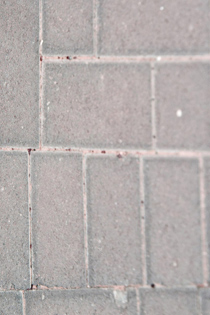Yves Crozet | 09.05.2019
The economics of urban rhythms tell us that cities are characterized by a double scarcity, that of time for individuals, that of space for the community. The former, because of the increase of their income, seek to intensify their activity programs. For this they develop their mobility at the risk of causing traffic congestion. Public policies are therefore in charge of managing the scarcity of space, so that individual mobility is part of a collective process of production. But [...]
Les spatialités en questions.
Vincent Coëffé, Christophe Guibert et Benjamin Taunay | 25.04.2019
The body is an "object" whose status is problematic since at least Antiquity in the "Western tradition". First approached by philosophers, whose representations are historically differentiated, it was then invested by other human and social sciences, which have remained most often silent on the relationship between body and spatiality. The geographers, for their part, have kept away from this "object", but the question of the body has become an epistemological issue, especially for those who have invested the concept [...]
Dialogue autour de la notion de rythme.
Lucien Delley, Juliana González et Laurie Daffe | 17.04.2019
As polysemous and intangible as the notion of "rhythm" might be, one must note its capacity to make diverse disciplines (such as geography, literature, biology, dance, sociology or economy) work and speak together. Wishing to pursue this dialogue, can the specific conditions to build a common reflection and the production of an "undisciplined knowledge" be identified ? In light of the seminar "Urban Rhythms" – that took place in Lausanne from 8 to 10 November 2017 –, our reflection [...]
Être dans la norme vs. être à contre-norme.
Vincent Coëffé, Christophe Guibert et Benjamin Taunay | 11.04.2019
Skin is a marker of historically constructed social and cultural norms, and embodies the tensions that may exist between what individuals and societies consider "normal" and "abnormal". If white skin in China is a socially shared aesthetic referent, sunbathing can be analysed here as an a priori deviant practice. The objective of this article is thus to understand, through the case of tanning, the social uses of the body, especially in public spaces in Chinese context. The spatiality of [...]
Rachel Thomas | 04.04.2019
This text explores the links between walking rhythms and rhythms related to fluctuations in tonalities and intensity of ambiances. It hypothesizes a correlation between walking gaits, the variations in pedestrian attentionality and what I propose to call here "ambient rhythms". The rhythm would not be the cadence or the tempo, but rather a way of flowing atmospheres and bodies. The review of field work carried out in two districts of the city of Grenoble – Europole and Île-Verte – [...]
Dominique Boullier | 22.02.2019
Events are exceptional moments in urban rhythms and attract a lot of attention. However, they are not easily traceable, and social sciences clearly favored long duration phenomena (structural effects) or cycles (as in opinion trends). Thanks to the traces that we leave on digital networks, rapidly emerging collective behaviors can now be accounted for. They may even be related to on site events. Qualities of the constructed environments (containers) and attention attractors (contenants) can be combined to generate eurythmic [...]
Critical Approaches to Metrology.
Matthieu Noucher, Irène Hirt et Xavier Arnauld de Sartre | 21.02.2019
When the construction of a political space demands shared systems of measurement, ensuring that everything is made comparable, coding categories and procedures are brought into place. Attributing singular cases to measurable categories was for a long time a prerogative of the State, but new systems of metrology are now broadening the range of players. With this traversal, we aim to start deconstructing these metrological systems, both old and new, to prompt different readings of the rhetoric behind them. By [...]
Lisa Lévy | 15.02.2019
This article proposes to enter the black box of the large territories making process, by means of a rhythm analysis. We examine the rhythmic trajectory of three projects, a French one (Pôle d'Orly) and two Swiss ones (the Geneva and Lausanne agglomeration projects), using the notion of improvisation. Rhythm analysis allows us to show how improvisation, beyond metaphor, qualifies this trajectory. We will first focus on the temporal trajectory of our projects, i.e. their emergence and deployment over time [...]
Solen Le Clec'h, Johan Oszwald, Simon Dufour, Michel Grimaldi, Nicolas Jégou et Matthieu Noucher | 07.02.2019
This article analyzes the impact of the choice and accuracy of input data on the metrology of the objects of Nature, based on the example of the ecosystem services mapping in the Amazonian pioneer fronts. To do so, field and remote sensing data are linked using regressions. These regressions emphasize : 1) the unequal capacity to map ecosystem services ; 2) the need to adapt the methodology to each indicator ; 3) the need to take into account various [...]
Promesses d'un concept en mouvement.
Guillaume Drevon, Luc Gwiazdzinski, Vincent Kaufmann et Luca Pattaroni | 21.12.2018
La ville ? « Ne pas essayer trop vite de trouver une définition de la ville ; c’est beaucoup trop gros, on a toutes les chances de se tromper ». Le rythme ? Comment réussir « à définir un seul et même signifiant qui véhicule tant de signifiés différents ? ». Et pourquoi chercher à le faire ? Paul Valéry lui-même a avoué (dans ses Cahiers) son échec à éclairer la double énigme du langage et de l’être. La [...]


